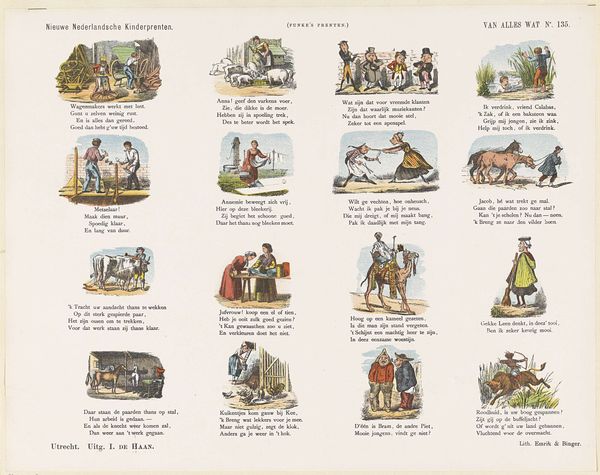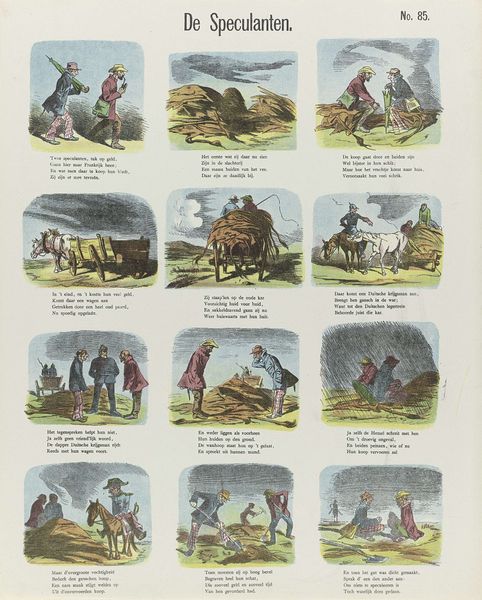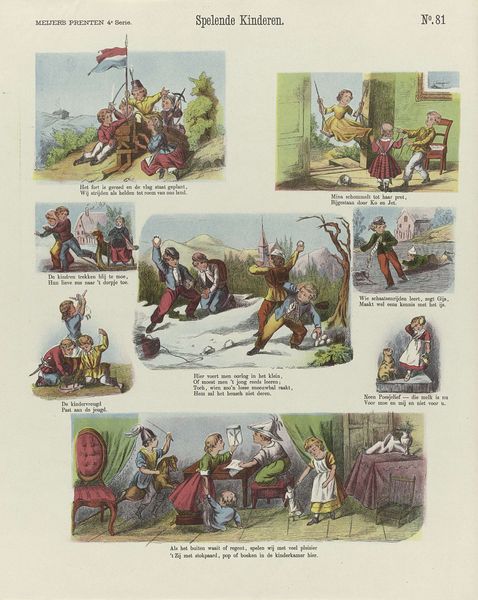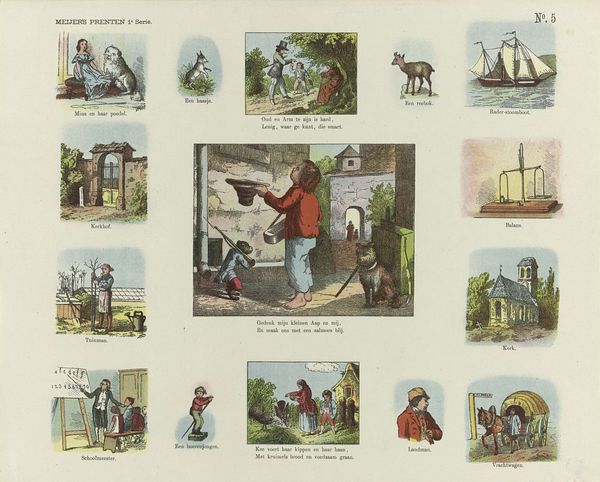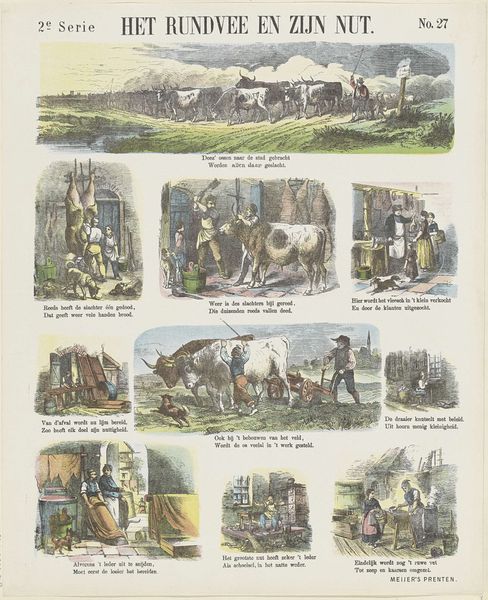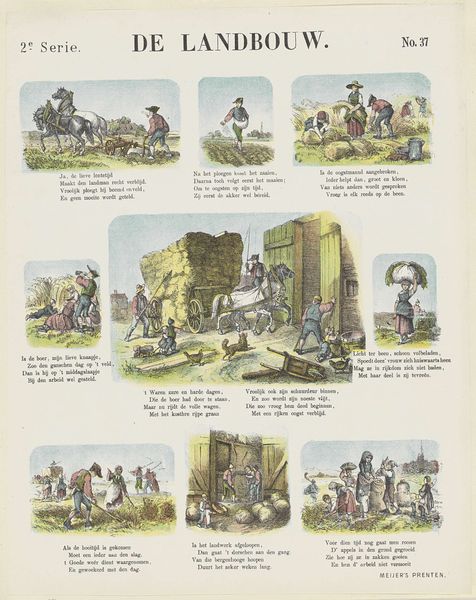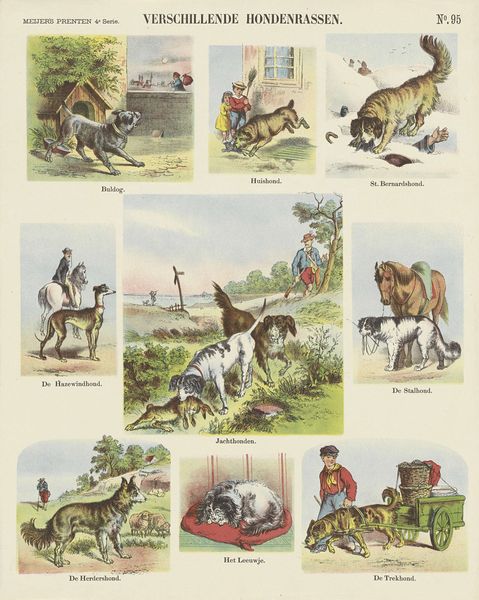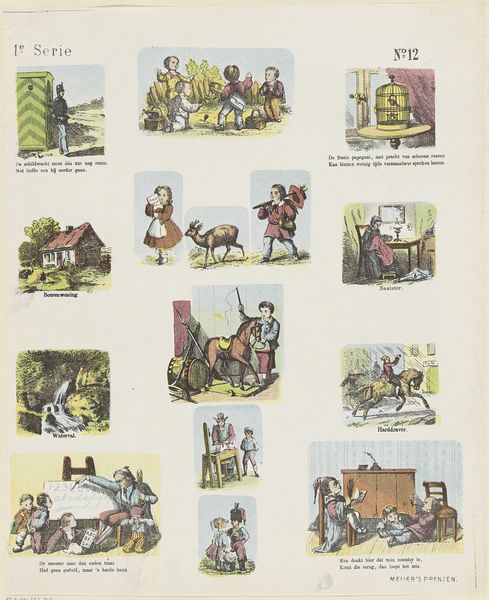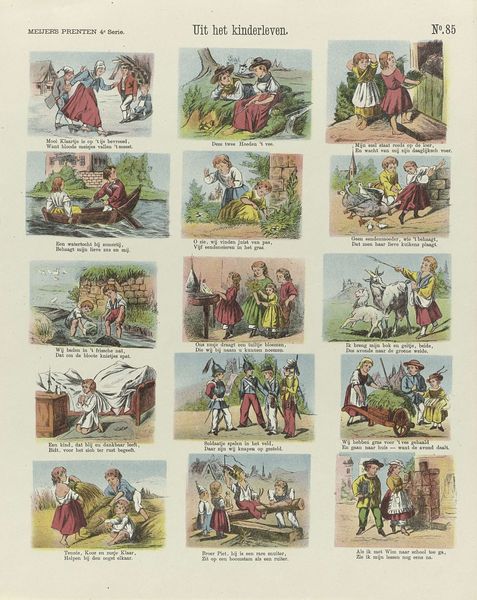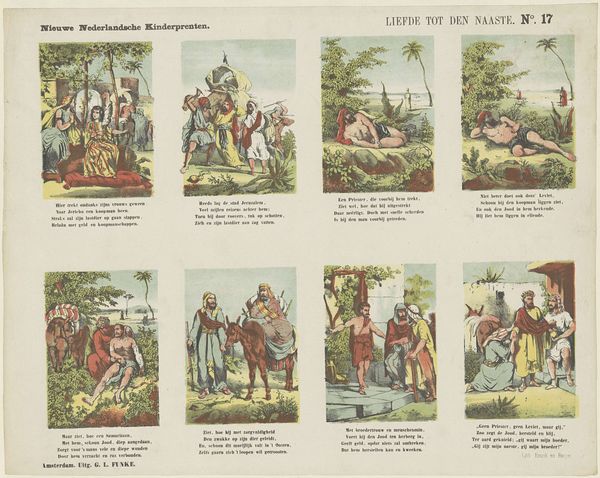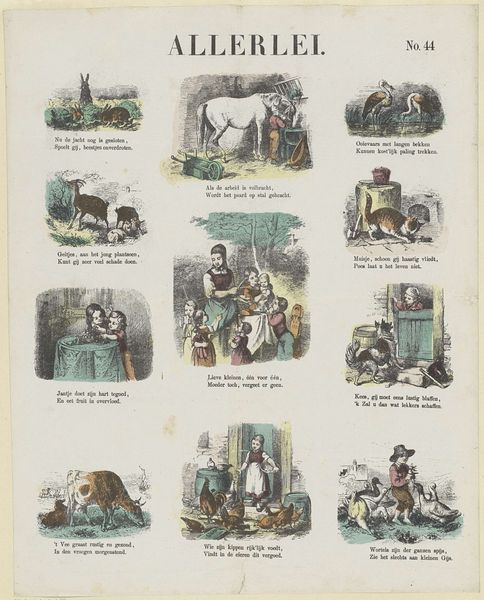
#
narrative-art
# print
#
landscape
#
folk-art
#
genre-painting
Dimensions: height 430 mm, width 340 mm
Copyright: Rijks Museum: Open Domain
Curator: Allow me to introduce "Het Landleven," which translates to "The Country Life," an 1881 print from the De Ruyter & Meijer studio. Editor: My immediate feeling is one of storybook simplicity; it evokes a kind of orderly, innocent charm. It feels incredibly constructed. Curator: That is perceptive. This work is very self-consciously assembled, an attempt at capturing and codifying rural labor and imagery within a defined space. Note the division into separate vignettes, each presenting an agricultural activity. This echoes a graphic structuring technique common in printmaking that lends itself to mass production. Editor: Absolutely. I see figures working the land: farmers harvesting, a milkmaid tending cows, a child picking flowers. What strikes me are the materials used – likely wood engraving, judging by the linework – which speaks volumes about accessibility and distribution. This wouldn't have been created for a wealthy patron, but for wider consumption. How does that impact its artistic value, its claim to "high art"? Curator: Precisely. And consider the perspective – naive, almost flattened, prioritizing clear depiction over realism. It's more about representing *ideas* of rural life than an observed reality. Semiotically, we could analyze the clothing, the tools, each carrying cultural significance linked to class, labor, and Dutch identity at the time. Editor: I'm also thinking about the labour that is portrayed. What’s presented appears idyllic. The hard physical graft of it all gets muted and aestheticized here, it would appear. A highly sanitized rural image. Is this meant to instruct as much as it is meant to soothe anxieties relating to an increasingly urban, industrialized society? Curator: A sharp point. Indeed, such depictions can romanticize agrarian labor. And yes, it functions to mitigate such anxieties. By presenting idealized versions of work. It can provide a space to safely process how different sectors work within industrial economies. The formal structures we initially spoke of, almost serve to enforce this reading. Editor: Fascinating how such a simple print layers with such dense implications of art history, socio-economics and material processes. Curator: Precisely; a seeming piece of folk art then contains a complexity if we apply rigor in our viewing, whether focusing on form or context.
Comments
No comments
Be the first to comment and join the conversation on the ultimate creative platform.
